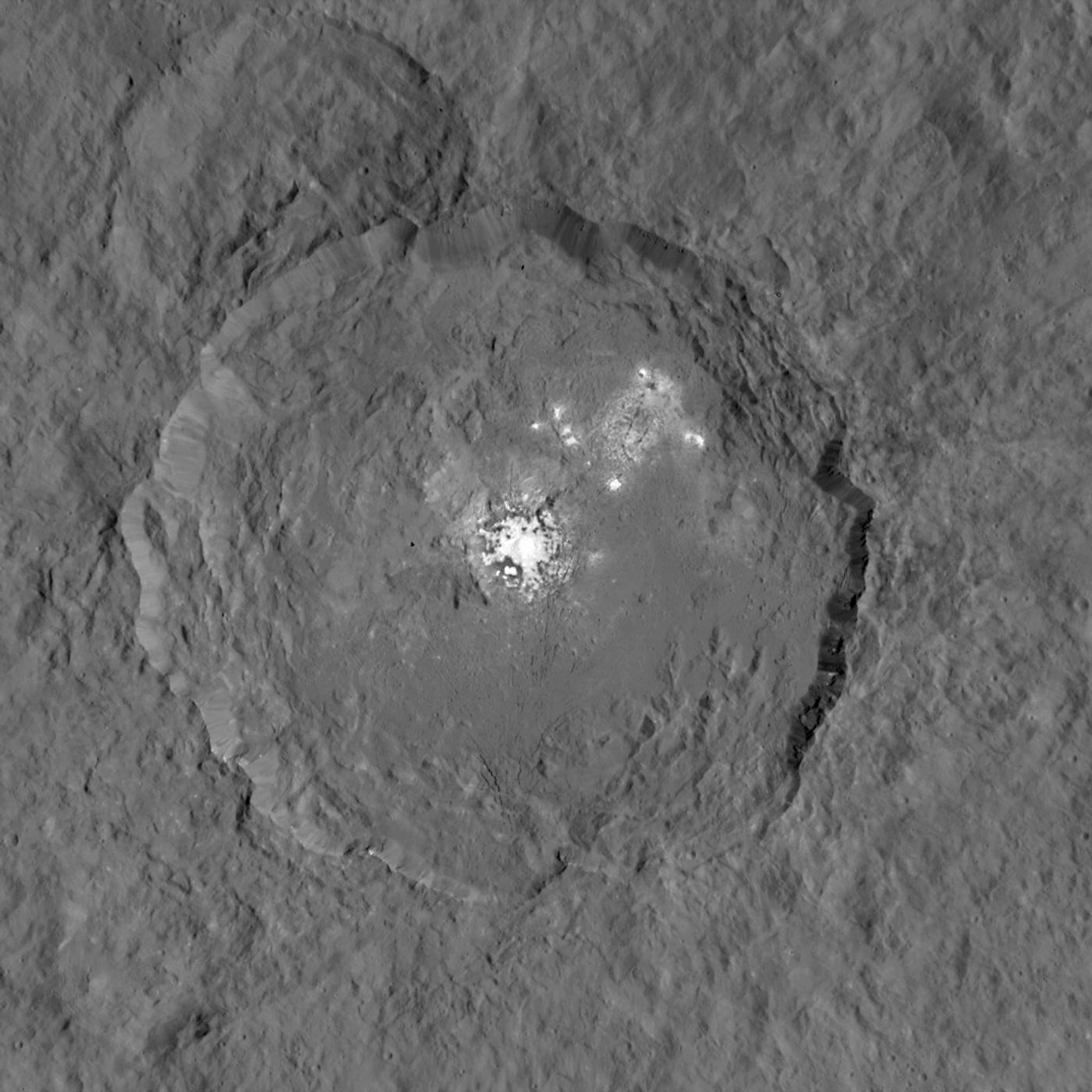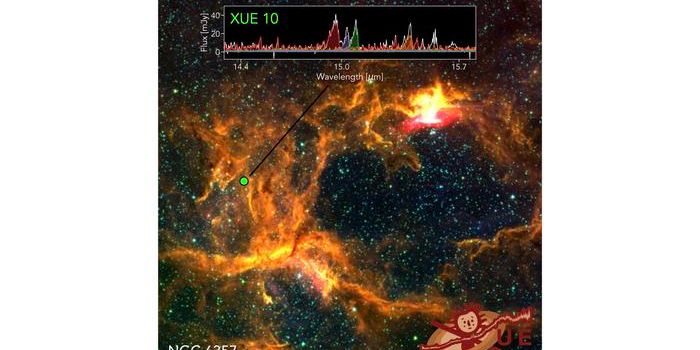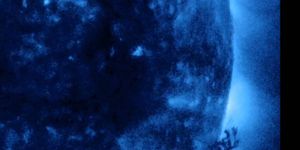NASA's Dawn Spacecraft Gets Clear View of Ceres' Mysterious Bright Spots
NASA’s Dawn spacecraft is keeping its eye on Ceres, a dwarf planet in the middle of the Asteroid Belt in between the planets of Mars and Jupiter. It wasn’t long ago that NASA released images that Dawn took of a strange conical mountain on the dwarf planet.
Recent images from Ceres taken by the Dawn spacecraft from just about 915 miles away are revealing specific objects on the dwarf planet’s surface that scientists are finding very intriguing.
There are bright spots on Ceres’ surface that the new close-up photographs aim to shed some light on. These are the clearest and highest-resolution photographs ever shot of the bright spots on Ceres’ surface.
The bright spots appear in the center of a crater on the dwarf planet known as the Occator crater. The new images give scientists a closer look at these unusual spots at a resolution that NASA says is equivalent to 450 feet per pixel.
NASA notes in their announcement that the firm actually took two separate photographs to try and learn more about these bright spots; one at a higher exposure and one and a lower exposure, to ensure all of the details of the spots and the surrounding terrain would be captured.
While there is still no concrete answer about where these bright spots came from, scientists will continue to analyze the bright spots for clues. The crater that the bright spots are located in is a very unusual crater because some of the inclines of the crater are actually vertical (straight up and down) instead of at a steep angle.
The Dawn spacecraft has been mapping the surface of Ceres for a while in the hopes to help scientists learn more about the dwarf planet, as well as any key information that could help reveal how our solar system was formed. These mapping processes will construct a 3D diagram of Ceres’ entire surface, giving scientists something more tangible to look at.
“Dawn has transformed what was so recently a few bright dots into a complex and beautiful, gleaming landscape," said Marc Rayman, Dawn's chief engineer and mission director based at NASA's Jet Propulsion Laboratory, Pasadena, California. "Soon, the scientific analysis will reveal the geological and chemical nature of this mysterious and mesmerizing extraterrestrial scenery.”
Below, you can watch a 3D representation of Occator crater on Ceres, created by the Dawn spacecraft:
Source: NASA









